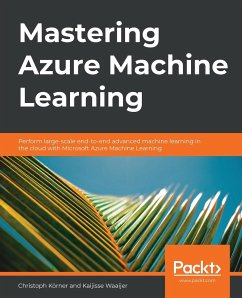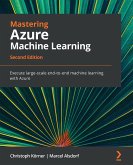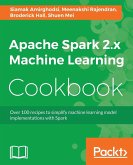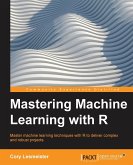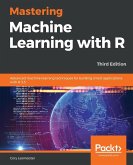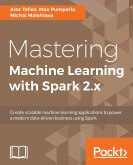Master expert techniques for building automated and highly scalable end-to-end machine learning models and pipelines in Azure using TensorFlow, Spark, and Kubernetes Key Features Make sense of data on the cloud by implementing advanced analytics Train and optimize advanced deep learning models efficiently on Spark using Azure Databricks Deploy machine learning models for batch and real-time scoring with Azure Kubernetes Service (AKS) Book Description The increase being seen in data volume today requires distributed systems, powerful algorithms, and scalable cloud infrastructure to compute insights and train and deploy machine learning (ML) models. This book will help you improve your knowledge of building ML models using Azure and end-to-end ML pipelines on the cloud. The book starts with an overview of an end-to-end ML project and a guide on how to choose the right Azure service for different ML tasks. It then focuses on Azure ML and takes you through the process of data experimentation, data preparation, and feature engineering using Azure ML and Python. You'll learn advanced feature extraction techniques using natural language processing (NLP), classical ML techniques, and the secrets of both a great recommendation engine and a performant computer vision model using deep learning methods. You'll also explore how to train, optimize, and tune models using Azure AutoML and HyperDrive, and perform distributed training on Azure ML. Then, you'll learn different deployment and monitoring techniques using Azure Kubernetes Services with Azure ML, along with the basics of MLOps-DevOps for ML to automate your ML process as CI/CD pipeline. By the end of this book, you'll have mastered Azure ML and be able to confidently design, build and operate scalable ML pipelines in Azure. What you will learn Setup your Azure ML workspace for data experimentation and visualization Perform ETL, data preparation, and feature extraction using Azure best practices Implement advanced feature extraction using NLP and word embeddings Train gradient boosted tree-ensembles, recommendation engines and deep neural networks on Azure ML Use hyperparameter tuning and AutoML to optimize your ML models Employ distributed ML on GPU clusters using Horovod in Azure ML Deploy, operate and manage your ML models at scale Automated your end-to-end ML process as CI/CD pipelines for MLOps Who this book is for This machine learning book is for data professionals, data analysts, data engineers, data scientists, or machine learning developers who want to master scalable cloud-based machine learning architectures in Azure. This book will help you use advanced Azure services to build intelligent machine learning applications. A basic understanding of Python and working knowledge of machine learning are mandatory.
Hinweis: Dieser Artikel kann nur an eine deutsche Lieferadresse ausgeliefert werden.
Hinweis: Dieser Artikel kann nur an eine deutsche Lieferadresse ausgeliefert werden.

